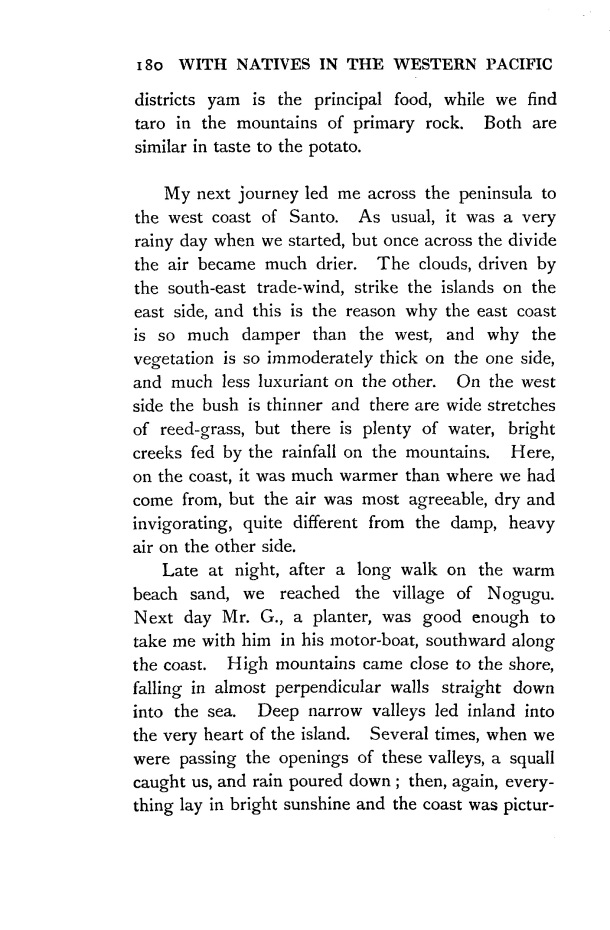|
|  [Note: this transcription was produced by an automatic OCR engine]
180 WITH NATIVES IN THE WESTERN PACIFIC
districts yarn is the principal food, while we find
taro in the mountains of primary rock. Both are
similar in taste to the potato.
My next journey led me across the peninsula to
the west coast of Santo. As usual, it was a very
rainy day when we started, but once across the divide
the air became much drier. The clouds, driven by
the south-east trade-wind, strike the islands on the
east side, and this is the reason why the east coast
is so much damper than the west, and why the
vegetation is so immoderately thick on the one side,
and much less luxuriant on the other. On the west
side the bush is thinner and there are wide stretches
of reed-grass, but there is plenty of water, bright
creeks fed by the rainfall on the mountains. Here,
on the coast, it was much warmer than where we had
come from, but the air was most agreeable, dry and
invigorating, quite different from the damp, heavy
air on the other side.
Late at night, after a long walk on the warm
beach sand, we reached the village of Nogugu.
Next day Mr. G., a planter, was good enough to
take me with him in his motor—boat, southward along
the coast. High mountains came close to the shore,
falling in almost perpendicular walls straight down
into the sea. Deep narrow valleys led inland into
the very heart of the island. Several times, when we
were passing the openings of these valleys, a squall
caught us, and rain poured down ; then, again, every-
thing lay in bright sunshine and the coast was pictur-
|